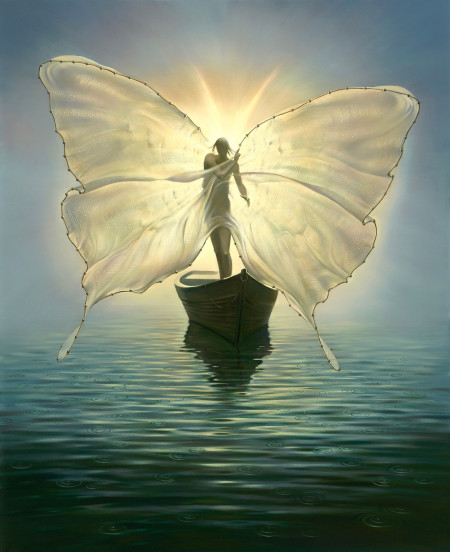Vladimir Kush Presents 'Fisherman for the Souls'

LAS VEGAS, May 16, 2022 (Newswire.com) - An Evening of Discovery took place this past weekend in Las Vegas inside the most unique gallery in the world Kush Fine Art, and among collectors, guests and visitors, World-renowned artist Vladimir Kush unveiled his newest Masterpiece "Fisherman for the Souls".
The anticipation and excitement just before the veil came off his new Masterpiece was then followed with applause and astonishment. The artist then proceeded to describe the meaning behind his artwork:
Water is associated with the unconscious - the knowledge hidden in its depths is very hard (or even impossible) for humans to obtain but can be accessed by the fish. Consider how Christ is justly called the 'catcher of human souls'.
The early Christian 'fish' symbol, the Greek ἰχθύς (ichthus, "fish") is an acronym for Ἰησοῦς Χριστός Θεοῦ Υἱός Σωτήρ (Jesus Christ, Son of God, Savior). The Latin piscina ('fish-pond') was used to refer to baptism, and the newly converted were affectionately called pisciculi ('little fishes').
We say 'still waters run deep' - the soul of another is hidden under a slumber-like veil and in the depths of the sea there is knowledge and knowing of God into which a man is initially unable to penetrate. The water cleanses, immersing yourself in it amounts to being born again. Therefore, the man in the painting is a representation of God casting the net in order to introduce the man to the knowledge of the world and its Creator through the image of a goldfish.
The goldfish itself is a symbol of divine visitation or inspiration, of success in navigating the 'turbulent sea of life'. Jesus himself draws an analogy between catching fish and converting people to the new faith. The faithful are baptized in water, often by immersion in a font. The image of the three intertwined fishes is a symbol of Trinity and a reference to the major Christian feast of the same name.
The fisherman's butterfly wings invoke an age-old association with the newly converted souls, butterfly being a symbol of immortality in the ancient times. Its life cycle is an excellent example of this: life (a brightly colored caterpillar), death (a dark chrysalis) and revival (the spirit breaking free).
In the aftermath of WWII Dr Elizabeth Ross was taking care of the children rescued from the Nazi concentration camps. In the barracks where they were housed, she noticed the simple shape of a butterfly repeatedly scratched on the wooden bunks. When asked about the meaning of this picture the children at first refused to answer. At long last a seven-year-old boy explained: "These butterflies represent us. We all know that our suffering bodies are but a passing stage, like a caterpillar's, and one day our souls will fly away from all this filth and pain. Drawing butterflies is a way to remind each other about this. We are the butterflies and we are going to fly away soon."
Visit www.kushfineart.com for more information or email KFA Gallery at info@kushfineart.com.
Source: Kush Fine Art
